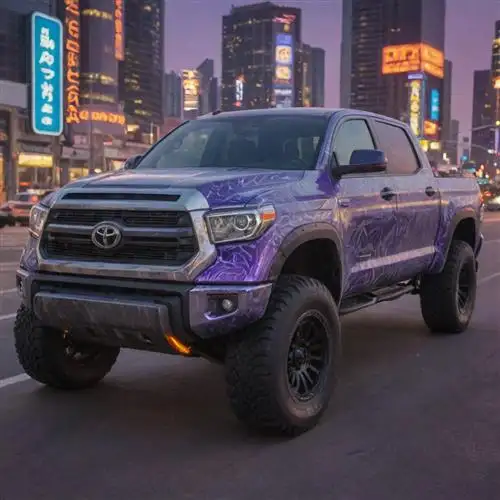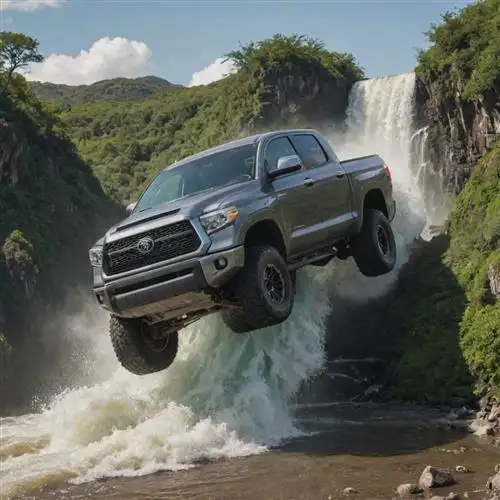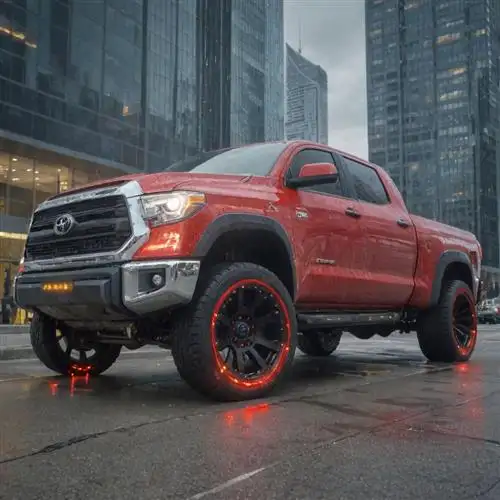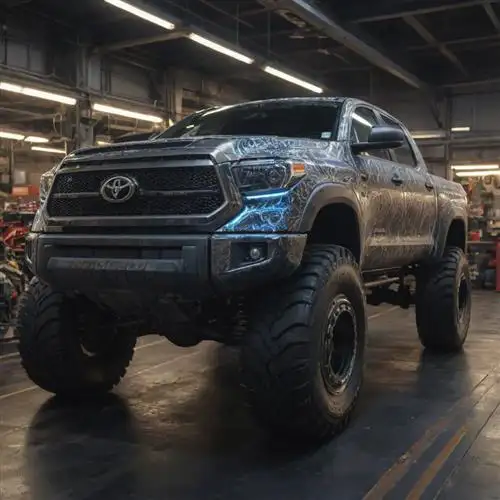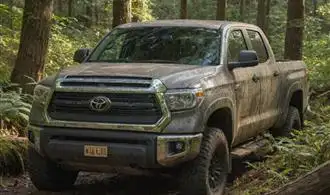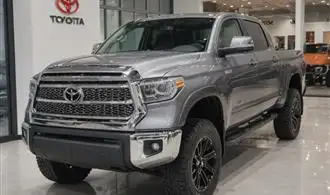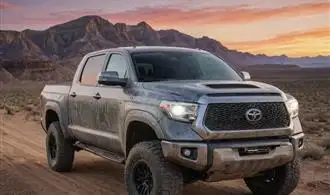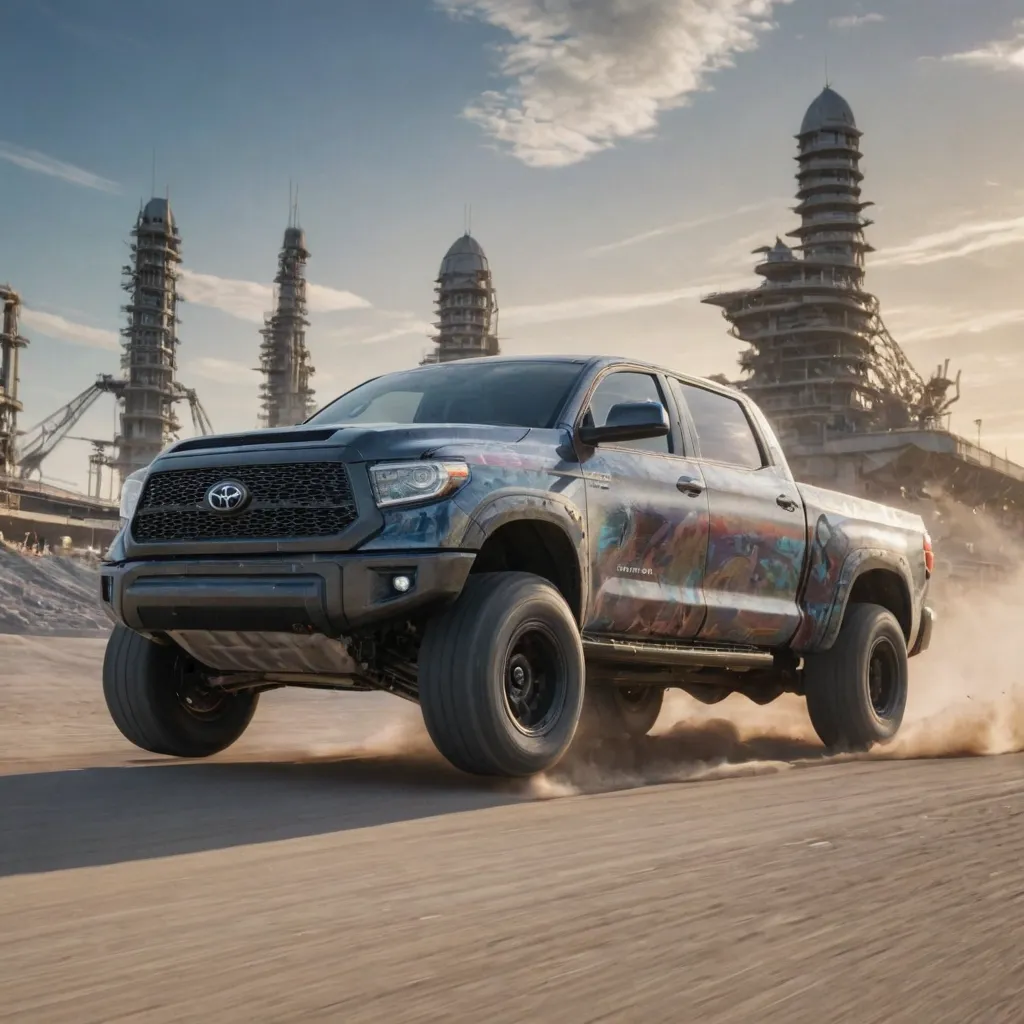
Supercharge Your Engine
When it comes to boosting the performance of your Toyota Tundra, one of the most effective upgrades you can make is to supercharge the engine. Superchargers are mechanical forced-induction systems that use an engine-driven compressor to increase the density of the air entering the engine, resulting in a significant increase in power and torque output. Here are some key considerations when looking to supercharge your Tundra's engine:
Engine Compatibility: Not all supercharger kits are created equal. It's crucial to ensure that the supercharger you choose is specifically designed and engineered for your Tundra's engine. Compatibility ensures a seamless integration and optimal performance gains.
Power Output: Superchargers come in various sizes and configurations, each offering different levels of power increase. Carefully research and select a supercharger that will provide the desired boost in horsepower and torque to match your driving needs and performance goals.
Fuel System Upgrades: When you increase the engine's power output, you'll also need to upgrade the fuel system to accommodate the additional air and fuel required. This may include upgrading the fuel pump, injectors, and even the fuel lines to ensure reliable and consistent performance.
Cooling Considerations: Supercharging generates additional heat, which can put strain on the engine's cooling system. Upgrading the radiator, fans, and even considering an auxiliary cooling system can help ensure your Tundra's engine remains within safe operating temperatures, even under heavy load.
Tuning and Calibration: Once the supercharger and supporting components are installed, professional tuning and calibration are crucial to ensure the engine is running at peak efficiency and performance. This step optimizes the air-fuel ratio, ignition timing, and other parameters to extract the maximum benefits from the supercharger.
Unleash the Power of Turbocharging
Turbocharging can transform the performance of your Toyota Tundra, unlocking a new level of power and responsiveness. By harnessing the energy from the engine's exhaust, a turbocharger forces more air into the cylinders, resulting in increased horsepower and torque. This can provide a significant boost to your Tundra's acceleration, towing capabilities, and overall driving dynamics.
When considering a turbocharger upgrade, it's essential to select a high-quality unit that is compatible with your Tundra's engine and can withstand the demands of the increased power output. Look for a turbocharger with a durable, reliable design that can deliver consistent performance over the long haul. Additionally, ensure that the turbocharger is paired with supporting modifications, such as a high-flow air intake and upgraded fuel system, to ensure optimal power delivery and efficiency.
The installation process for a turbocharger can be complex, so it's recommended to have the work performed by a skilled and experienced mechanic. Proper installation is crucial to avoid potential issues, such as oil leaks or compressor surge, which can damage the engine. Additionally, you may need to recalibrate the engine's computer to account for the increased airflow and optimize performance.
Once the turbocharger is installed and the system is properly tuned, you can expect to experience a significant boost in power and acceleration. Many Tundra owners report gains of 50-100 horsepower or more, depending on the specific turbocharger and supporting modifications. This can translate to improved towing capacity, faster merging and passing, and an overall more exhilarating driving experience.
Optimize Your Suspension for Agility
Optimizing your Toyota Tundra's suspension for agility is a crucial step in enhancing its performance. The suspension system plays a vital role in the vehicle's handling, ride quality, and overall driving experience. Here, we delve into the secrets of achieving better agility through suspension customization.
One key aspect is upgrading your Tundra's shocks and struts. Investing in high-quality, performance-oriented shocks can dramatically improve the vehicle's responsiveness and cornering abilities. Look for shocks that offer adjustable damping, allowing you to fine-tune the suspension to your driving preferences. Additionally, considering replacing the stock coil springs with stiffer, performance-grade units can provide a more planted and controlled ride.
Another effective strategy is to install a suspension lift kit. This modification not only enhances the Tundra's off-road capabilities but can also contribute to improved agility on the road. A well-designed lift kit will raise the vehicle's center of gravity, reducing body roll and enhancing stability during high-speed maneuvers. When selecting a lift kit, ensure it is compatible with your Tundra's specific model and year, and consider the impact on other components, such as the brakes and steering.
Wheel and tire selection also play a crucial role in boosting the Tundra's agility. Opting for a set of lightweight, high-performance wheels can reduce unsprung weight, allowing the suspension to respond more quickly to road conditions. Pair these wheels with tires that offer excellent grip and handling characteristics, such as performance all-terrain or off-road tires. This combination can significantly improve the Tundra's cornering abilities and responsiveness.
Maximize Traction with Tire Upgrades
Upgrading your Toyota Tundra's tires can significantly improve its performance and capabilities on and off-road. The right set of tires can enhance traction, grip, and overall handling, making your Tundra more responsive and capable in a variety of driving conditions. When selecting tire upgrades, consider the following factors to ensure you get the most out of your Tundra.
Assess Your Driving Needs: Evaluate how you primarily use your Tundra. If you frequently venture off-road, a set of all-terrain or mud-terrain tires would be a wise choice, as they provide superior grip and durability in challenging terrain. Conversely, if your Tundra is primarily used for highway driving, a set of high-performance, low-profile tires can enhance responsiveness and provide a smoother, more refined ride.
Consider Tire Size and Aspect Ratio: Upgrading to a larger tire size can improve your Tundra's overall traction and off-road capability. However, it's essential to ensure that the new tires fit within the vehicle's wheel well and don't rub on the suspension components. Additionally, a lower aspect ratio (the ratio of the tire's sidewall height to the tread width) can enhance handling and stability, but may result in a stiffer ride.
Prioritize Tire Compound and Tread Design: The tire compound and tread design play a crucial role in traction. Look for tires with a soft, sticky compound that provides excellent grip on various surfaces, including wet or loose terrain. The tread pattern should be optimized for the type of driving you'll be doing, whether it's aggressive off-road conditions or high-speed highway maneuvers.
Ensure Proper Tire Maintenance: Regularly inspect your Tundra's tires for signs of wear, damage, or improper inflation. Maintain the recommended tire pressure, rotate the tires as per the manufacturer's instructions, and replace them when the tread depth reaches the minimum recommended level. Proper maintenance will not only improve traction but also extend the lifespan of your tires.
Enhance Braking Performance
Improving the braking performance of your Toyota Tundra is a crucial aspect of enhancing its overall driving dynamics and safety. One of the key factors in achieving better braking is upgrading your vehicle's brake components. Consider investing in high-performance brake pads that offer improved friction and heat dissipation, allowing for shorter stopping distances and more confident braking. Look for pads that are specifically designed for towing or heavy-duty use, as the additional weight of your Tundra can place greater demands on the braking system.
Alongside upgraded brake pads, you may also want to consider upgrading your brake rotors. Larger, slotted, or drilled rotors can help improve heat dissipation and reduce brake fade, especially during heavy or repeated braking. This can be particularly beneficial when towing heavy loads or navigating steep descents. Ensure that any rotor upgrades are compatible with your Tundra's braking system and provide the necessary clearance for your wheel and tire setup.
Another effective way to enhance braking performance is to upgrade your brake fluid. The stock brake fluid in your Tundra may not be able to withstand the high temperatures generated during aggressive braking. Switching to a high-performance, high-boiling-point brake fluid can help maintain consistent and reliable braking, even under the most demanding conditions. This is especially important when towing heavy trailers or navigating through mountainous terrain.
In addition to upgrading your brake components, consider addressing any potential issues with your Tundra's brake system. Inspect the brake lines for any signs of wear or damage, and replace them if necessary. Ensure that the calipers are functioning correctly and that the brake pads are not worn beyond their recommended replacement interval. Regular maintenance and inspection of your braking system can go a long way in maintaining optimal performance and safety.
Unleash Horsepower with Aftermarket Parts
The Toyota Tundra is a formidable truck, but with the right aftermarket parts, you can unlock even greater performance potential. From engine upgrades to suspension modifications, the options are endless. Let's explore some of the most effective ways to boost your Tundra's horsepower and transform it into a true powerhouse on the road.
Engine Upgrades: The heart of your Tundra's performance lies in its engine. Investing in high-quality aftermarket parts, such as a cold air intake, performance exhaust system, or even a supercharger, can significantly increase your truck's horsepower and torque. These upgrades not only enhance the raw power but also improve the engine's efficiency, resulting in a more responsive and thrilling driving experience.
Turbocharger Kits: For a more dramatic power boost, consider installing a turbocharger kit. These advanced systems harness the exhaust gases to force more air into the engine, resulting in a substantial increase in horsepower. Turbocharger kits are available from reputable manufacturers, and they often come with comprehensive installation instructions and support, making the upgrade process straightforward.
Fuel System Enhancements: The fuel system plays a crucial role in your Tundra's performance. Upgrading components like the fuel pump, fuel injectors, and fuel lines can ensure your engine receives the optimal air-to-fuel ratio, leading to improved combustion and a noticeable power gain.
ECU Tuning: The Engine Control Unit (ECU) is the brain of your Tundra, managing various aspects of engine operation. By utilizing professional ECU tuning services or aftermarket tuning software, you can optimize the fuel and ignition maps, unlock hidden performance potential, and tailor the engine's behavior to your specific driving preferences.
Suspension Upgrades: While engine modifications are a common focus, don't neglect the importance of a well-tuned suspension. Upgrading your Tundra's shocks, struts, and other suspension components can improve handling, stability, and traction, allowing you to better harness the increased power and deliver it to the ground.
Braking System: As your Tundra's performance increases, it's essential to ensure your braking system can keep up. Investing in high-performance brake pads, rotors, and even upgraded calipers can provide the stopping power necessary to safely and confidently manage your truck's newfound capabilities.
Optimize Aerodynamics for Top Speed
Optimizing the aerodynamics of your Toyota Tundra can unlock a significant boost in performance, from improved top speed to enhanced fuel efficiency. The key lies in understanding the principles of aerodynamics and implementing strategic modifications to your vehicle. By reducing air resistance and enhancing airflow, you can achieve remarkable gains in overall performance.
One of the most impactful areas to focus on is the front end of your Tundra. The shape and design of the grille, bumper, and hood can greatly influence the way air flows over and around the vehicle. Consider installing a well-engineered bull bar or grille guard, which can streamline the air intake and reduce turbulence. Additionally, modifications to the front fascia, such as adding custom air dams or splitters, can help direct airflow more efficiently.
The side mirrors on your Tundra also play a crucial role in aerodynamics. Replacing the stock mirrors with more aerodynamic designs or even opting for mirror delete kits can significantly reduce drag and enhance top-end performance. Insider Secrets - The Toyota Tundra Accessories the Experts Swear By delves deeper into the impact of specialized Tundra accessories on overall performance.
Another area worth considering is the bed of your Tundra. Adding a tonneau cover or a sport-style bed cap can minimize air turbulence and improve airflow over the rear of the vehicle. These simple modifications can contribute to a noticeable increase in top speed and fuel efficiency.

